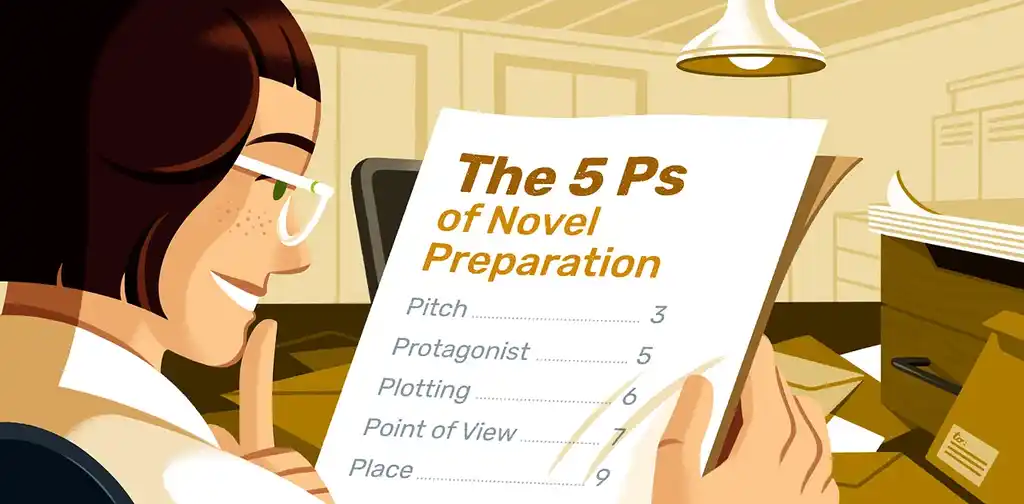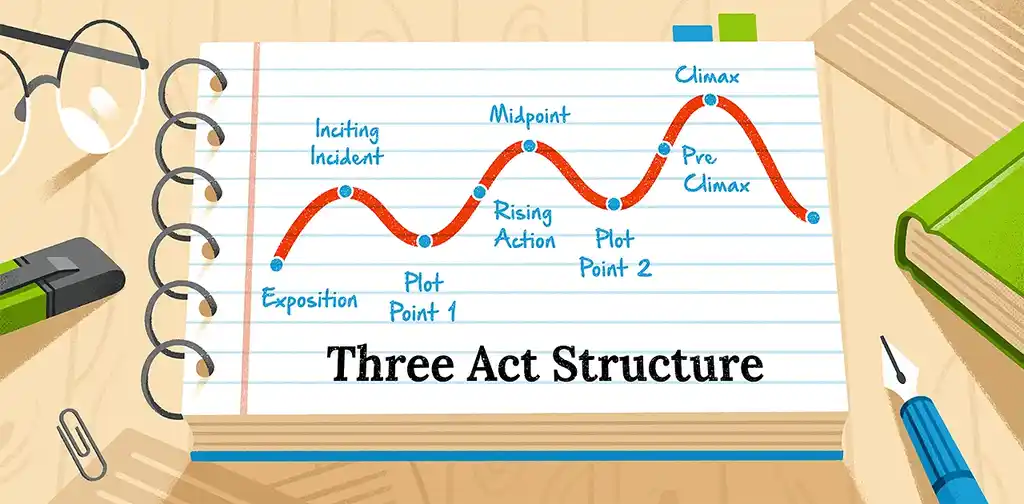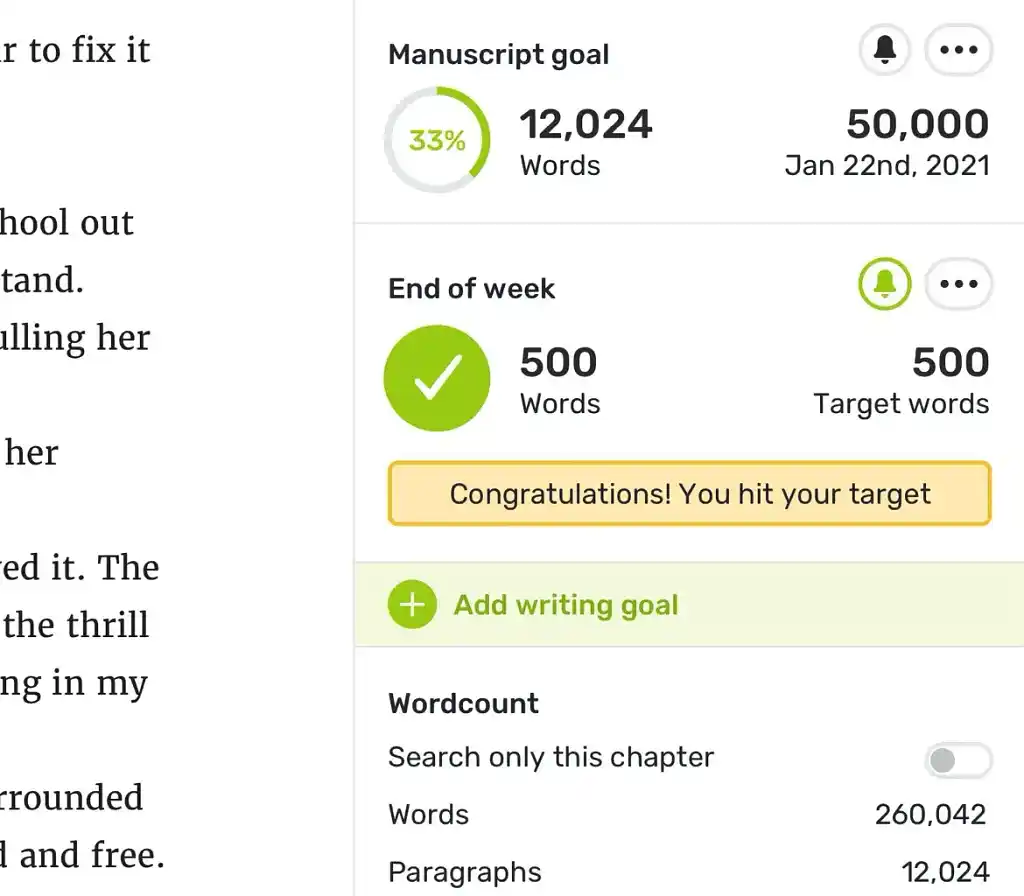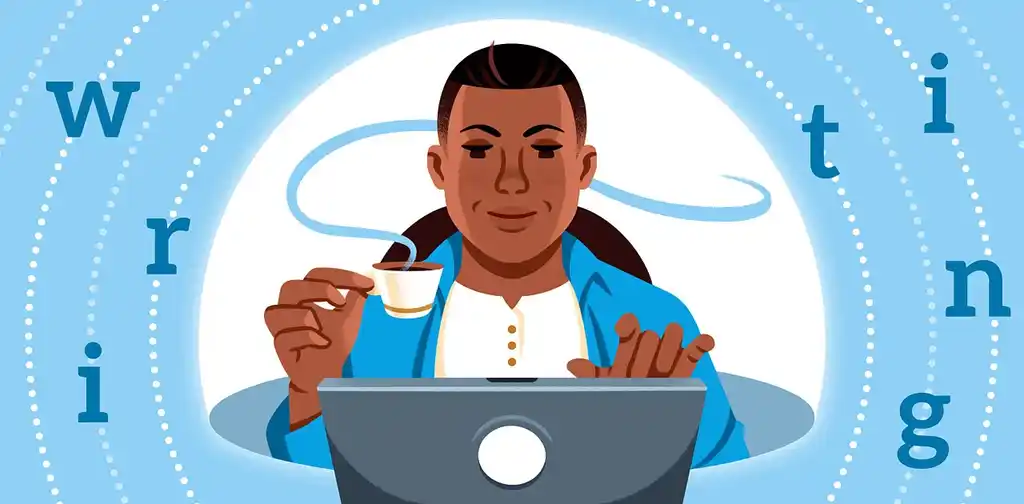Guides • Perfecting your Craft
Last updated on Oct 02, 2025
Preptober: 8 Tips to Actually Draft a Novel in November
Tom Bromley
Author, editor, tutor, and bestselling ghostwriter. Tom Bromley is the head of learning at Reedsy, where he has created their acclaimed course, 'How to Write a Novel.'
View profile →How do you set yourself up to actually win the challenge of writing a novel in November? That’s what October is for. Affectionately known as “Preptober” by the NaNoWriMo community, it’s the perfect time to get your notes (and yourself) organized so you can hit the ground running — and keep going strong — once November begins.
In this post, I’ll share both literary and organizational tips, starting with what we call the 5 P’s — pitch, protagonist, plot, POV, and place — which are essentials to write a novel.
1. Define your story pitch
Known in full as the elevator pitch (or logline,) the idea here is to imagine yourself selling your idea to someone in an elevator with only a matter of seconds before the doors ping. In novel-writing terms, this is all about distilling your idea down into a single sentence.
This might sound easy, but in fact is one of the hardest (and most important) sentences you’ll write throughout the process. When done well, it captures the essence of what your book is about. And when you’re stuck half-way through, you can go back to this sentence to remind yourself what it is that you’re writing.
A good pitch is about the story (not theme or style, or how many multiple viewpoints you’re planning). It should have conflict embedded with an outcome that is unclear. The more specific the details, the better. And all within one sentence (I told you this wasn’t easy!). But that process of pruning down to so few words is invaluable: it’ll really help you understand what is at your novel’s heart.

FREE RESOURCE
The 5 P's of Novel Preparation
This worksheet will help you nail down your 5 P's and start your novel on the right foot.
2. Know your protagonist
Which comes first in the planning, the plot or the protagonist? It might seem like one of those chicken and egg questions, but in fact, the relationship between the two is a bit different: in a good story, the protagonist should shape the plot, and the plot should shape the protagonist.
That said, my advice in the planning is that the more you can get to know your protagonist before you begin, the smoother your writing journey will be. What is particularly useful is to have a sense of your main character's motivations and goals. What is it that they want, or that they think they want? And what is it that they more fundamentally need?
The reason this is important isn’t just because it’ll help you understand who your protagonist is. It’s because those goals should underpin what the story is about. When you’re stuck in the writing and not sure where things are going next, nine times out of ten, the answer isn’t in more plot, but in getting to know your protagonist better, and understanding what is driving them.

FREE RESOURCE
Reedsy’s Character Profile Template
A story is only as strong as its characters. Fill this out to develop yours.
3. Identify the key plot points
Out of the 5 Ps, the question of how much plotting to do in advance is the one that divides writers. You may have heard of the plotters vs. pantsers debate: in reality, there aren’t two types of writers but a sliding scale of much planning people like to do before they put pen to paper.
There’s no right answer here: only the one that works for you. But what I would say is that to get 50,000 words down in a month is no mean feat, so for those who want to hit that goal, I would personally lean more towards the planning side of the debate. It will help keep you on track and overcome stagnation in your wrtiting process. Pantsing is great when you have time to explore where the novel might take you: it might be less helpful when you’re up against a deadline.
There are lots of story structure templates out there (if that’s your thing) and those can be useful to give yourself a structure to work with. My advice is to go back to your protagonist and plot out their own journey of change, how they’ve transformed by the end of the story, and frame the narrative around that. That should give you enough key plot points, and an overall framework which you can then use to flesh out the details (remember, too, that the more character has at stake, the more compelling the narrative).

FREE COURSE
How to Plot a Novel in Three Acts
In 10 days, learn how to plot a novel that keeps readers hooked
4. Choose a practical POV
The fourth P in our planning pod is that of point of view. This sounds like a small thing, but it is much better to know in advance the viewpoint (or viewpoints) you’re going to write your story from. Going back through and rewriting from what you belatedly realize is the right point of view is a soul-destroying task (I speak from personal experience!).
I’d keep the viewpoint choice as straightforward as possible. Most modern novels are written from either a first person perspective or in third person ‘close’ (where the viewpoint sits on the shoulder of a single character, like Long John Silver’s parrot). It can be useful to experiment with a section in each, to see which feels right.

FREE COURSE
Understanding Point of View
Learn to master different POVs and choose the best for your story.
The other choice in advance is to decide on which tense to use: again, the unpicking if you choose wrong is thankless (he says bitterly again). Again, you’re probably looking at whether to tell the story in present or past tense. The present tense gives more immediacy and is better for stories told in the moment: the past gives more depth, and is preferable for those told over time.
5. Nail the place of your story
Our final P is that of place. Where and when is the story going to be set? It’s easy to forget the latter, but it can bring in a lot of useful specific detail to your settings.
How much prep is needed here depends on the sort of book you’re writing. If you’re thinking sci-fi or fantasy, there might be whole worlds and cultures to invent and create. If your story is set in present-day New York, maybe not so much.

FREE RESOURCE
The Ultimate Worldbuilding Template
130 questions to help create a world readers want to visit again and again.
Wherever your story is located, the more detail that you have up your sleeve the better. Remember the different senses: it’s not just how a place looks that is important, but also the sounds, smells, tastes, and textures, too. If it’s possible to visit possible locations, now is a great time to do so. If not, a bit of Googling and assembling a mood board of images never hurts. There’ll be time to flesh out the settings in the rewrites, but if you can do the prep, it’ll help get your novel off to a great start.
6. Customize your goals and schedule
Different writers approach this "Novel Sprint" challenge with different goals in mind. It’s important to understand beforehand what you want to get out of it. Do you want to simply make progress on a story you’re stuck on? Learn how to get in a writing groove? Or actually write a full manuscript?
The typical goal is to write 50,000 words, which is an arbitrary number. You can choose to participate in any way you like. For example, by lowering the word goal, or simply setting the intention of writing every day. To cover a full novel’s length, which is on average 80,000 words, you’ll likely need more than 30 days anyway.
Ultimately, the real spirit of this endeavour is to challenge yourself, write more, and to do that alongside a community of fellow writers.
Adjust your daily word goal
Depending on what your writing goal is, you’ll be able to figure out your daily word count. If you’re aiming for 50,000 words, you’ll need to write 1,667 words a day.
If you have a very consistent life with no real plans for the month, you might want to stick to that. If you have a more fluctuating or busy schedule, adjust the number for lower or higher targets on different days. For example, if you’re a student you can write less when you are close to assignments and tests, and more when your week is regular.


FREE WRITING APP
Reedsy Studio
Set goals, track progress, and establish your writing routine in our free app.
Overall, set yourself up for success by clearing your November calendar as much as possible. By getting some things done in advance, you'll have that extra amount of time and a clearer mind going into the challenge.
Plan your routine
Different writers work best at different times of day, so work out when is best for you (and fits into your daily schedule).
I’m very much a morning person, so I know that if I need to get the words down, I’m going to have to set the alarm. I once went on a writing retreat where I wrote 30,000 words of a draft in six days (I was very tired by the end). That involved getting up and writing 2000 words before breakfast, another 2000 before lunch, and a final 1000 words in the afternoon. By that point, I was pretty spent and needed to recharge for the next day. If I hadn’t got those early words down, I’d never have hit my daily word count: as my energy dipped I’d have got slower during the day and would have eaten into my recovery time in the evening.
You might be a morning person like me; alternatively, you might be a night owl, preferring to write into the small hours. Either way, find your best writing time and plan accordingly. One final tip: each time you finish, decide where you’re going to start the next session. Some writers I know always finish mid-sentence, so they’ve got something to immediately pick up the next day.
7. Set yourself up for success
This novel sprint is a tough challenge, so every little thing you can do to optimize your chances of success beforehand can make a big difference. This is true both for the writing aspect of it, and everything else surrounding it.
Create a reward system
To sustain your efforts throughout the entire month you need to find ways to reward yourself. The how is entirely up to you. Some people like to treat themselves to something special when they reach a goal, like a nice dinner or a bottle of wine. Others prefer to simply take a break and do something they enjoy, like indulge in a favorite (and possibly healthy) snack, listen to a special song, or play video games. You could perhaps use a mix of both special and simpler rewards. Whatever you choose, make sure it’s motivating enough to keep you going.
🎵
Tell us about your book, and we'll give you a writing playlist
It'll only take a minute!
Organize your workspace
Chaos may be a source of inspiration for some people, but a messy workspace can distract and make it more difficult to concentrate. You want to be able to just sit down and focus. So, if that helps you, do a deep clean and organize your workspace ahead of November.
Also, keep your notes about plot, character, and other story elements organized. Perhaps print them and keep them in a binder, in a single folder on your laptop, or distill the key points in your notebook’s pages. You may find yourself pressed for time throughout the month, and you don't want to waste it sifting through documents. So organize the most important information in one place.
8. Harness the power of community
Finally, lean into the social side of the challenge and make it work for you. While the original NaNoWriMo is gone, today’s alternatives all provide community spaces — from Preptober workshops to November writing sprints, whether through live events or active Discord channels.
And if you choose to do it on your own instead, call a fellow writer or browse writing communities to find someone who can help you stay motivated.
In the end, Preptober isn’t just about preparation — it’s about building excitement for your novel. It’s a chance to step into the mindset of a professional writer and move closer to your publishing goals. With these tips, you’ll be ready to plan effectively and make the most of your November novel sprint. Good luck!





